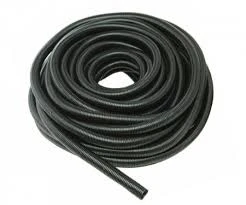Understanding the Functionality and Benefits of Chip Conveyors in Manufacturing Systems
What is a Chip Conveyor?
In modern manufacturing and machining processes, efficient waste management is crucial for maintaining productivity and quality. One of the devices designed to streamline this aspect is the chip conveyor. But what exactly is a chip conveyor, and how does it function within various industrial applications? This article will delve into the key aspects of chip conveyors, including their types, components, benefits, and applications.
Understanding Chip Conveyors
Chip conveyors are mechanical systems used to transport metal chips, shavings, and other byproducts generated during machining processes away from the working area. These chips may result from various operations such as milling, turning, or grinding. Chip conveyors play an essential role in ensuring these particles do not disrupt production, promote safety, or damage machinery.
Types of Chip Conveyors
There are several types of chip conveyors, each designed to cater to specific machining needs and environments
1. Flat Belt Conveyors These conveyors utilize a flat belt system to move chips along a horizontal or inclined plane. They are versatile, easy to clean, and can handle various chip types and sizes. 2. Drag Chain Conveyors This type consists of a chain that drags the chips along a defined path. It is particularly effective for handling larger or heavier chips and is often used in high-volume machining operations. 3. Magnetic Conveyors These are ideal for ferrous materials. The conveyor employs magnetic forces to transport metal chips while keeping them aligned and orderly. 4. Screw Conveyors Using a rotating screw mechanism, these conveyors can efficiently move chips in a confined space. They are well-suited for handling high-density or moist chips.
5. Wire Mesh Conveyors Constructed with a mesh-like belt, these conveyors allow for effective chip transportation while facilitating the removal of cutting fluids, making them ideal for wet machining processes.
Key Components
A chip conveyor system generally comprises several components
- Drive Unit This is the motor that powers the conveyor, ensuring that chips are consistently moved along the designated path.
- Frame The structure supporting the conveyor and providing stability and alignment to the entire system.
what is a chip conveyor

- Belt or Chain The surface that transports the chips
. The material of the belt or chain is often chosen based on the types of chips being handled.- Discharge Chute This component directs the moved chips to a designated disposal area or collection container.
- Controls Modern chip conveyors are equipped with controls for operation management, which can include sensors to detect jams and enable automatic shut-offs.
Benefits of Chip Conveyors
The implementation of chip conveyors in manufacturing operations offers several notable advantages
1. Increased Efficiency By automating the removal of chips, operators can focus on the machining process without frequent interruptions for cleanup.
2. Enhanced Safety Chip accumulation can lead to workplace hazards. By continuously removing waste, chip conveyors create a safer work environment for machine operators.
3. Improved Machine Life Excessive chip buildup can harm machines, leading to increased wear and tear. Chip conveyors reduce this risk, prolonging the life of costly manufacturing equipment.
4. Cleaner Work Environment A clean workspace not only boosts morale but also ensures that the final products maintain high quality, free from debris contamination.
5. Reduced Labor Costs Automating chip management decreases the need for manual labor, allowing companies to allocate their workforce to more value-added tasks.
Conclusion
Chip conveyors are indispensable in the contemporary manufacturing industry, streamlining waste management processes while contributing to overall efficiency, safety, and cleanliness. As technology progresses, these systems continue to evolve, offering innovative solutions to meet the diverse needs of machining operations. By understanding the fundamentals of chip conveyors, manufacturers can optimize their workflows, leading to enhanced productivity and sustainability in their operations.








